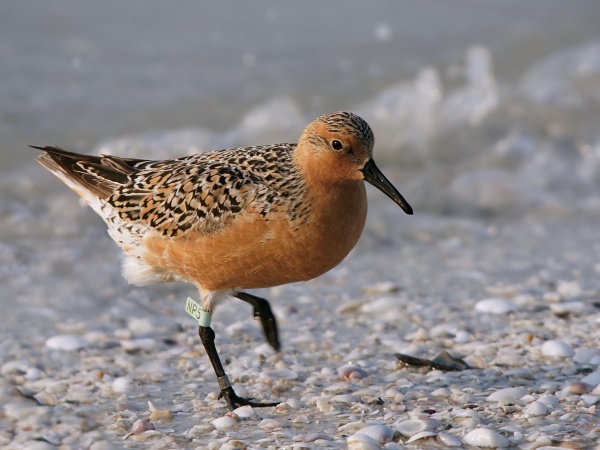Facts About Red knot
The red knot is a medium-sized shorebird native to the tundra regions of Canada, Europe, and Russia. A member of the Calidris sandpiper family, this bird comprises six recognized subspecies. Its diet varies seasonally: during breeding, it primarily consumes arthropods and larvae, while for the remainder of the year, it feeds on mollusks. Outside of breeding season, red knots congregate in large flocks.
First described by Carl Linnaeus in 1758, the red knot's closest relative is the surfbird. Its genus is polyphyletic, indicating multiple evolutionary origins. The six subspecies differ in size and are believed to have diverged approximately 20,000 years ago.
Red knots have a circumpolar distribution in the Arctic during the breeding season and migrate to coastal areas worldwide. Renowned for their epic migrations, they travel over 9,000 miles. Each subspecies follows unique migration routes and wintering grounds. One famous red knot, known as B95 or Moonbird, is celebrated for its exceptional longevity.
In appearance, the red knot is the second largest Calidris sandpiper, easily identifiable by its white wing bars and grey rump during flight. Its plumage changes with the seasons, enhancing its distinctiveness. The bird exhibits unique behaviors related to feeding, breeding, and migration.
Although classified as "Least Concern" by the IUCN due to its large population, the red knot faces local declines owing to habitat loss and reduced food sources. It is protected under the Agreement on the Conservation of African-Eurasian Migratory Waterbirds. The rufa subspecies is particularly threatened by the commercial harvesting of horseshoe crabs, which affects its survival.
Conservation efforts are in place to protect the red knot, especially the rufa subspecies, which is listed as federally threatened in the U.S. due to habitat degradation, food source loss, and climate change. While populations have shown signs of stabilization, ongoing conservation is crucial for the red knot's long-term survival.
